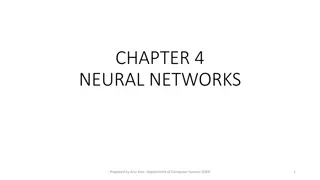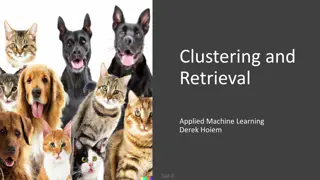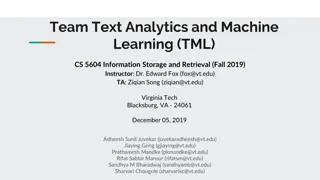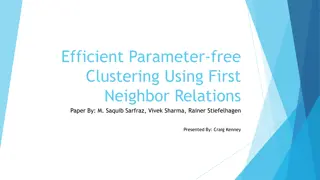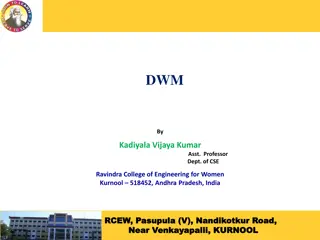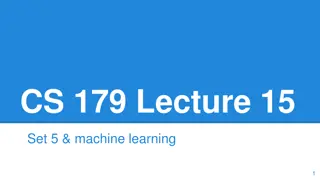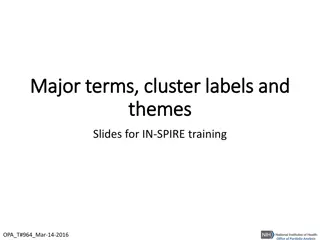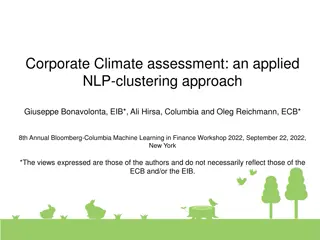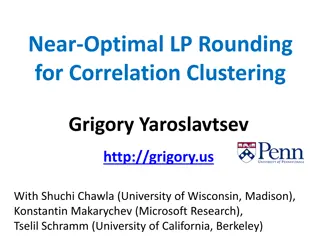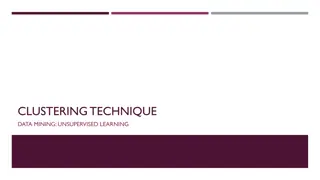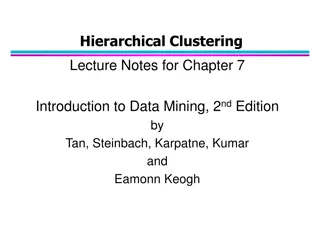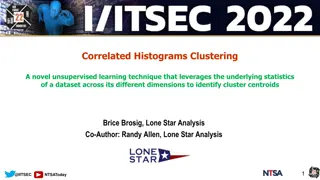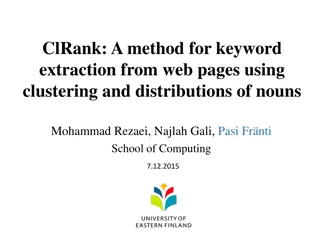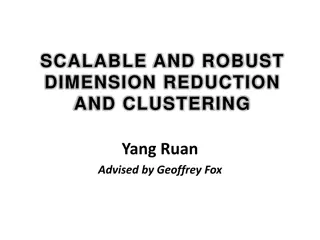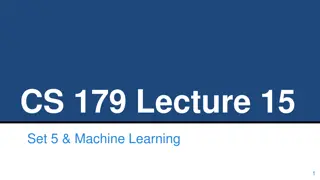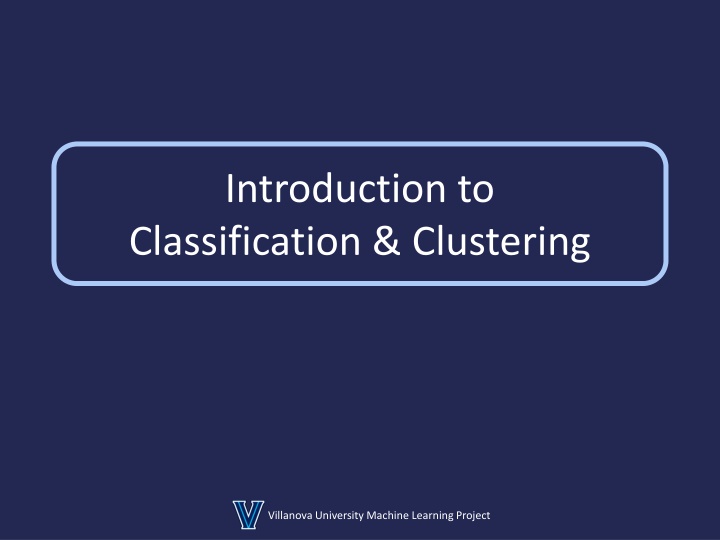
Introduction to Machine Learning Classification and Clustering at Villanova University
Explore the fundamentals of machine learning, including classification and clustering techniques, in the Villanova University Machine Learning Project. Discover how machine learning allows computers to learn from data and make intelligent decisions, with real-world examples such as face detection and fraud detection. Learn the distinction between classification and clustering, and delve into supervised learning methods for labeled data. Join the Villanova University project to deepen your understanding of this cutting-edge field.
Download Presentation

Please find below an Image/Link to download the presentation.
The content on the website is provided AS IS for your information and personal use only. It may not be sold, licensed, or shared on other websites without obtaining consent from the author. If you encounter any issues during the download, it is possible that the publisher has removed the file from their server.
You are allowed to download the files provided on this website for personal or commercial use, subject to the condition that they are used lawfully. All files are the property of their respective owners.
The content on the website is provided AS IS for your information and personal use only. It may not be sold, licensed, or shared on other websites without obtaining consent from the author.
E N D
Presentation Transcript
Introduction to Classification & Clustering Villanova University Machine Learning Project
Machine Learning Getting a computer to learn from data A type of Artificial Intelligence, where a computer does something "intelligent" Ability of a computer to improve what it does in a way that mimics how humans learn, like with repetition or experience Villanova University Machine Learning Project Introduction to Classification & Clustering 2
Examples of Machine Learning Face detection used by Facebook to help you automatically tag friends Spam filters that get better over time at identifying and trashing spam emails Fraud detection that notices suspicious patterns of credit card use and you get a call Optical character recognition that reads the numbers written on a check you deposit Villanova University Machine Learning Project Introduction to Classification & Clustering 3
Classification & Clustering Two ways to put things into categories Classification Categories already exist Put each thing into the category where it fits best Clustering Categories don t yet exist Put the things into brand new categories based on similar characteristics or features of the things Villanova University Machine Learning Project Introduction to Classification & Clustering 4
Classification Some of the things being put into groups are already labeled with their "class." These class labels are used to guide or supervise the classification of unlabeled things into one of the classes. When the classes are known ahead of time this type of machine learning is called: Supervised Learning Villanova University Machine Learning Project Introduction to Classification & Clustering 5
Example: Classification Dogs Cats Classify the photos on the next slide into one of these two categories Villanova University Machine Learning Project Introduction to Classification & Clustering 6
Example: Classification Villanova University Machine Learning Project Introduction to Classification & Clustering 7
How Did Classification Work? How did you approach the task? What made it easy to do? What made it hard to do? How good are your final categories? Villanova University Machine Learning Project Introduction to Classification & Clustering 8
Clustering None of the things being put into groups already have their class labels so the grouping is unsupervised. The task becomes figuring out clusters of things with similar features. When the classes are unknown ahead of time this type of machine learning is called: Unsupervised Learning Villanova University Machine Learning Project Introduction to Classification & Clustering 9
Example: Clustering Group 1 Group 2 Cluster the photos on the next slide into two categories. You decide! Villanova University Machine Learning Project Introduction to Classification & Clustering 10
Example: Clustering Villanova University Machine Learning Project Introduction to Classification & Clustering 11
How Did Clustering Work? How did you approach the task? What made it easy to do? What made it hard to do? How does it compare with Classification? How good are your final categories? Villanova University Machine Learning Project Introduction to Classification & Clustering 12
Example: Clustering Again! Group 1 Group 2 Group 3 Cluster the photos on the next slide into three categories. You decide! Villanova University Machine Learning Project Introduction to Classification & Clustering 13
Example: Clustering Villanova University Machine Learning Project Introduction to Classification & Clustering 14
How Did Clustering Work? How did you create categories? Did it get harder to do with more categories? How good are your results? Villanova University Machine Learning Project Introduction to Classification & Clustering 15

